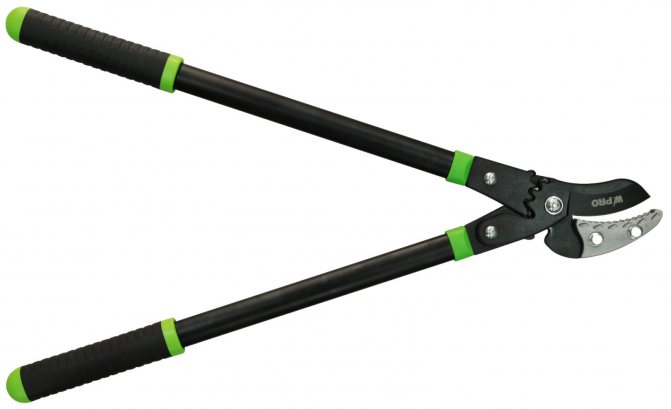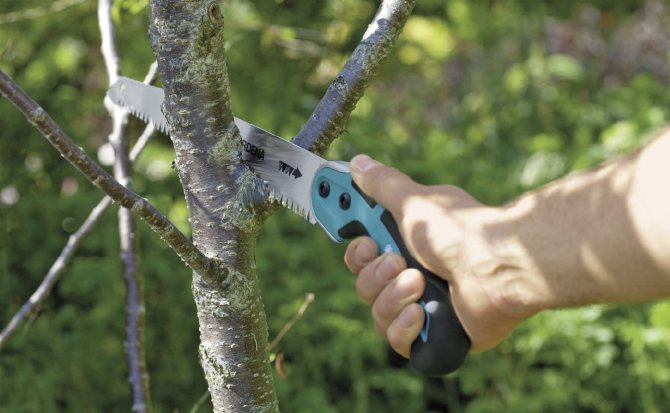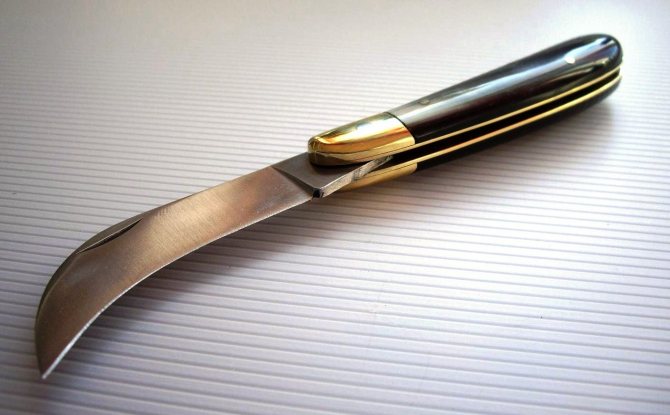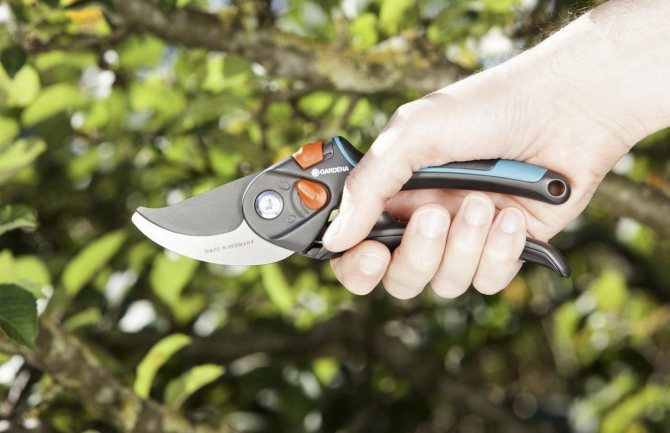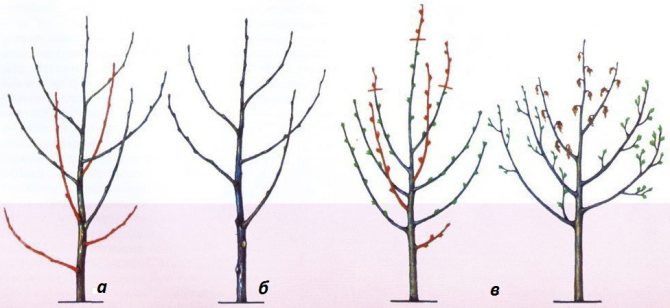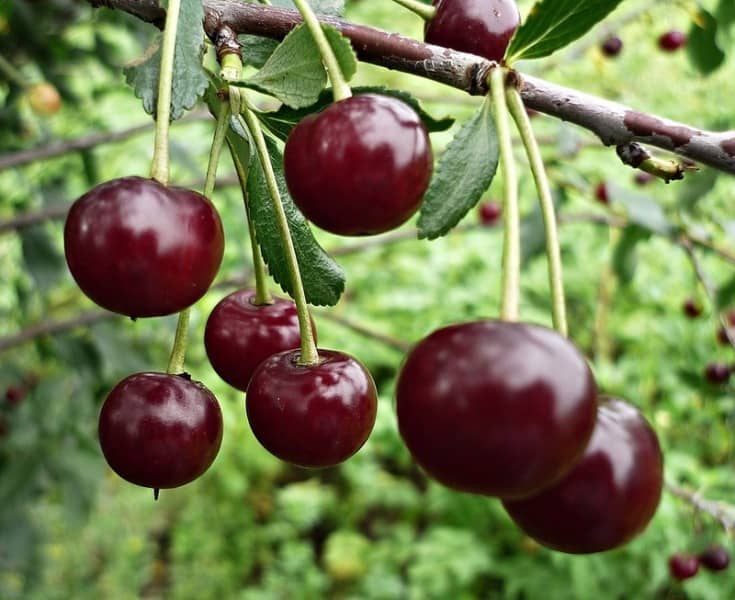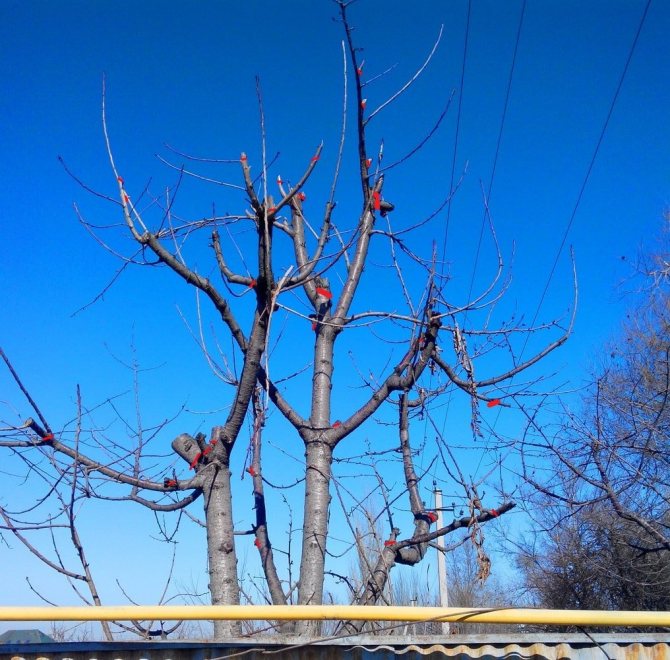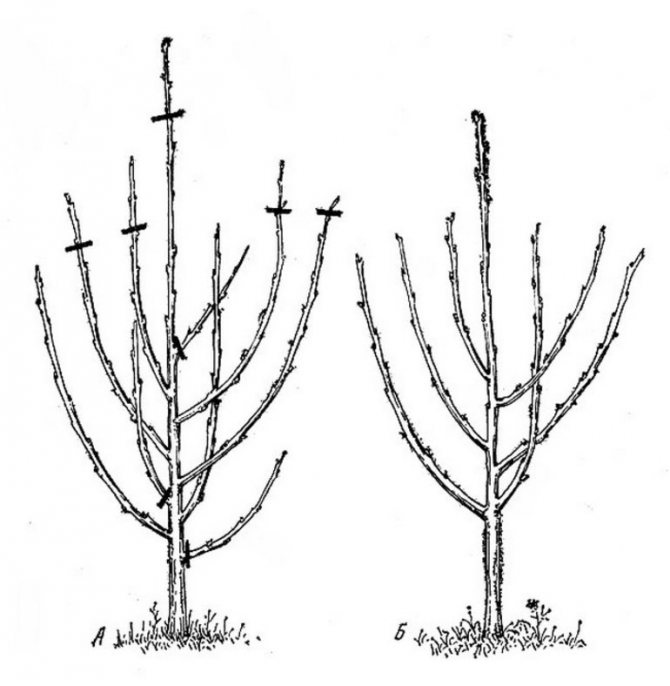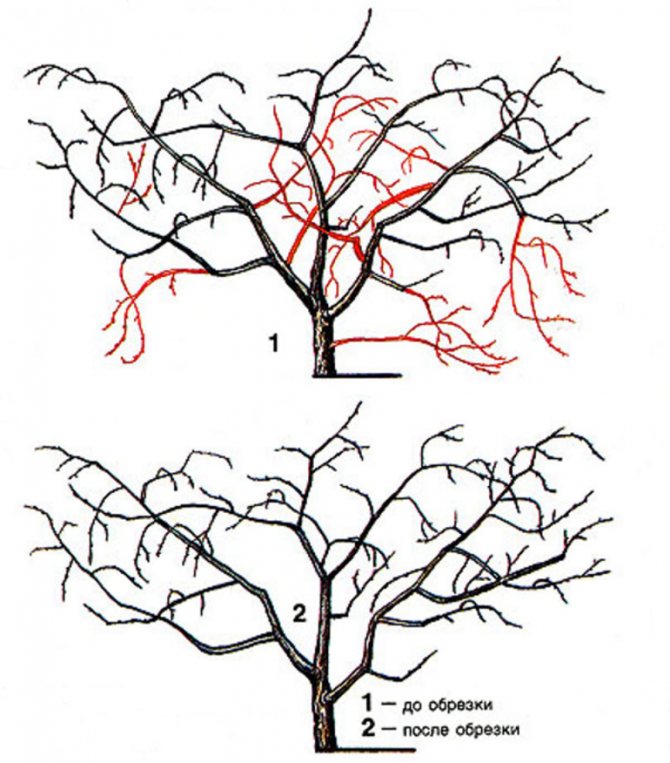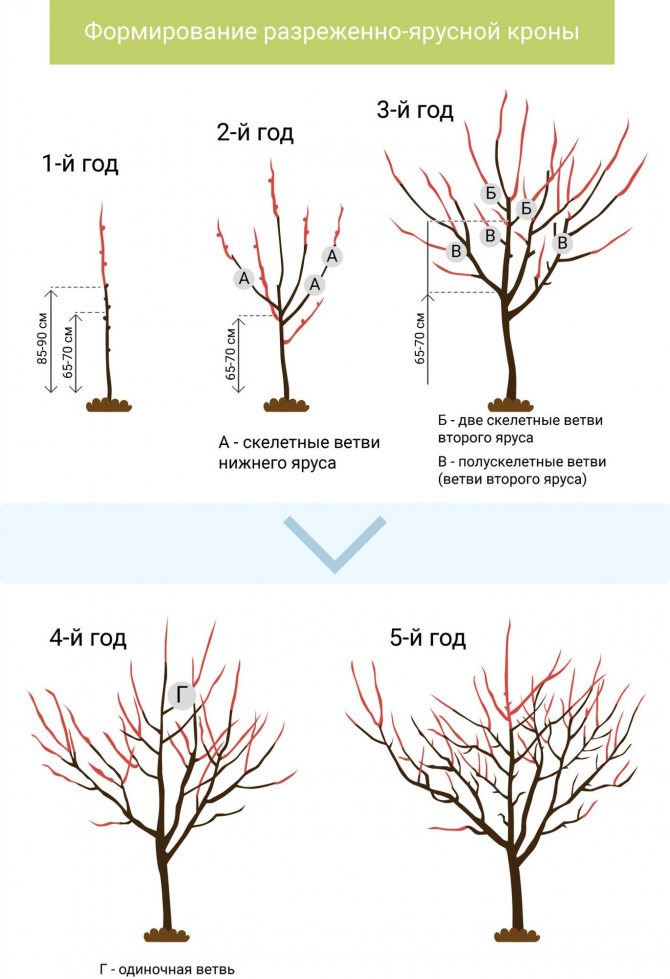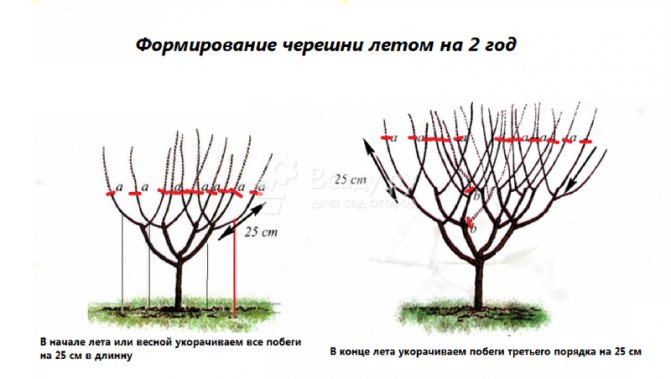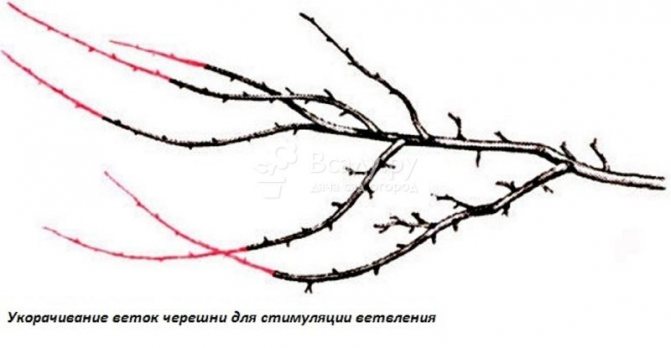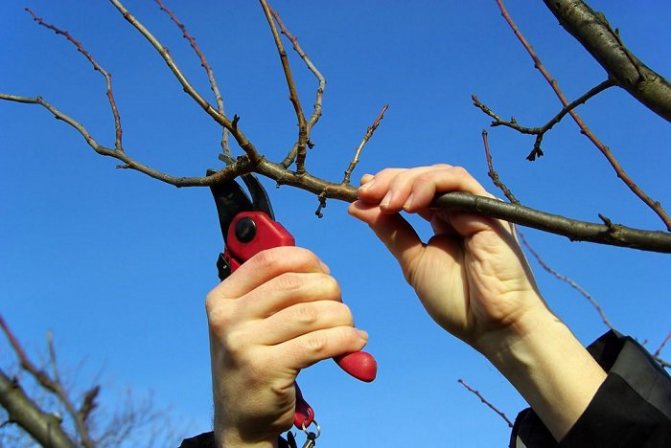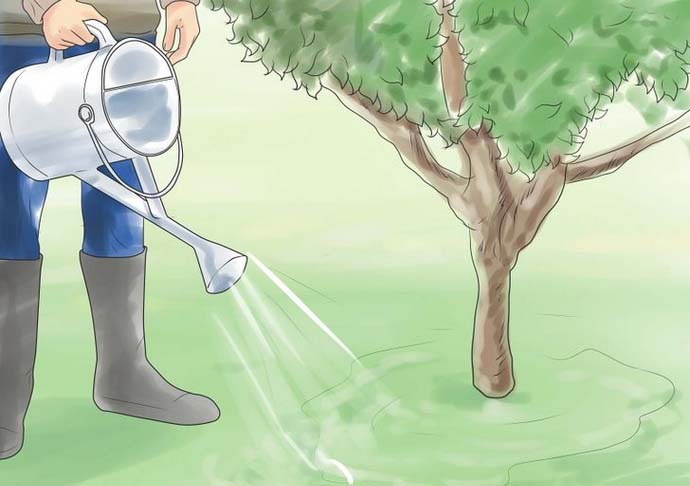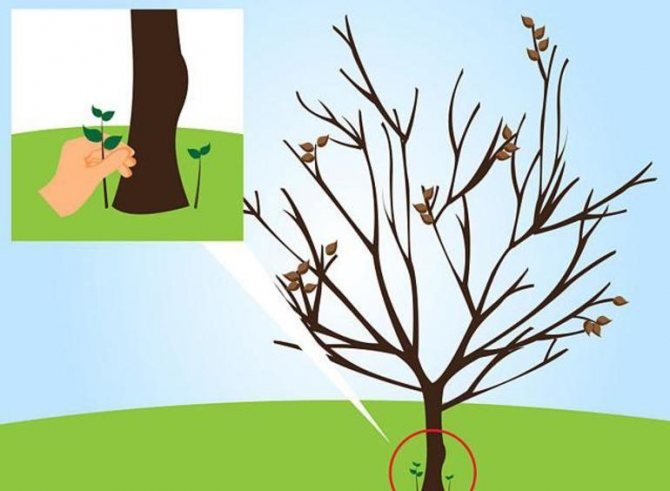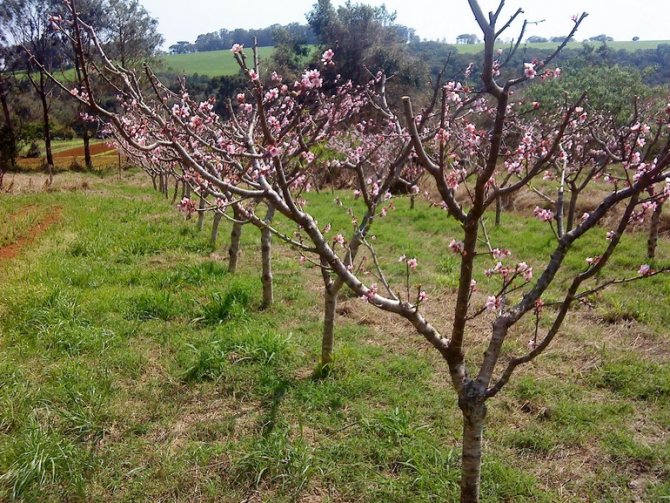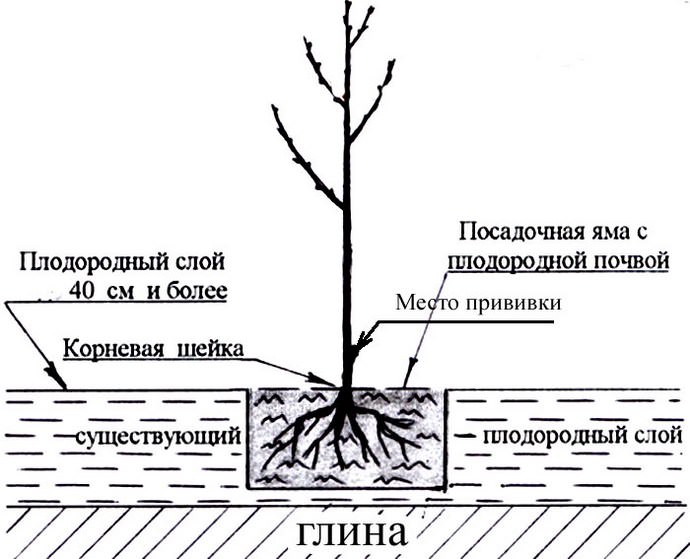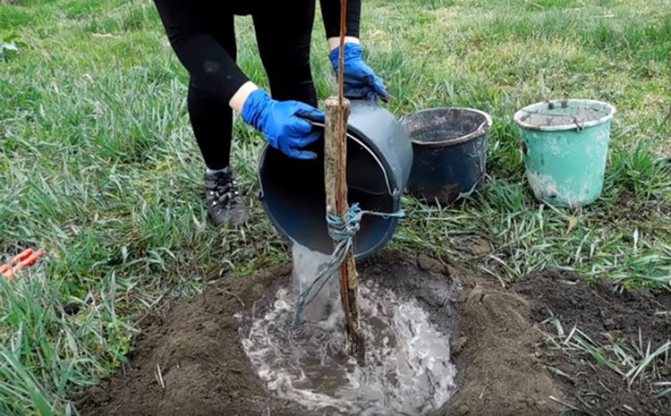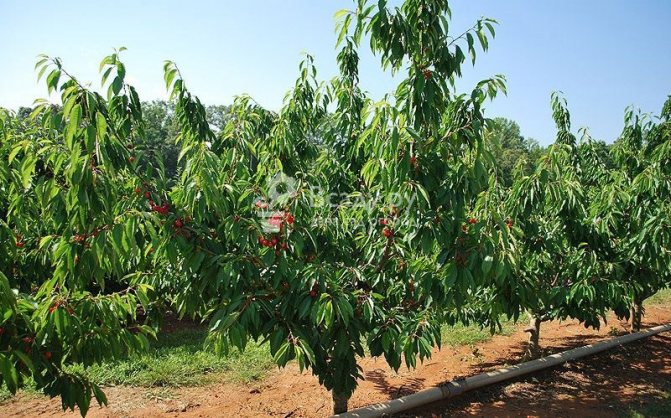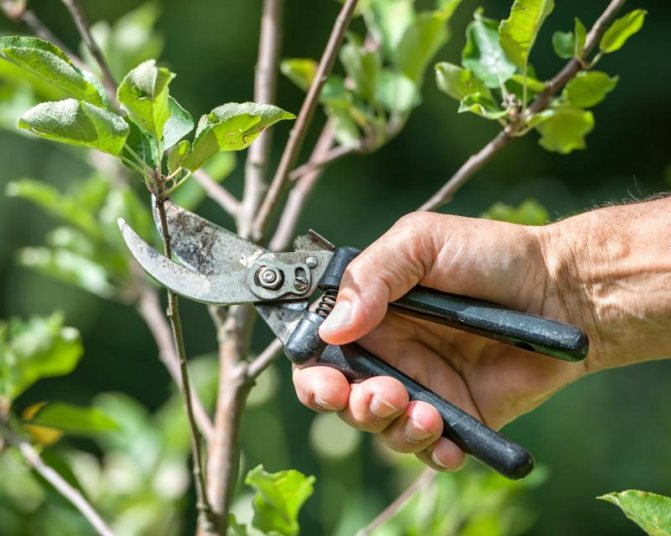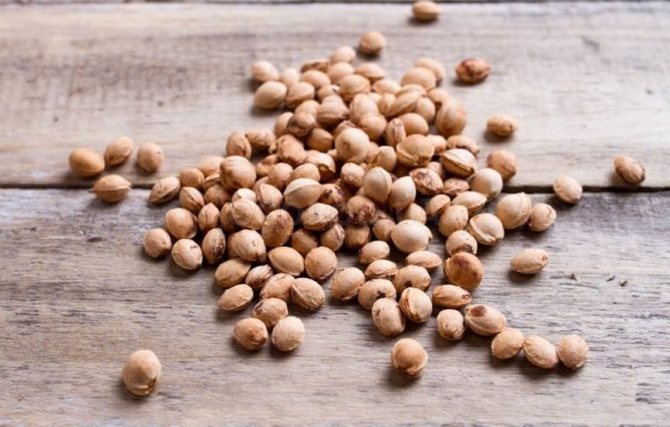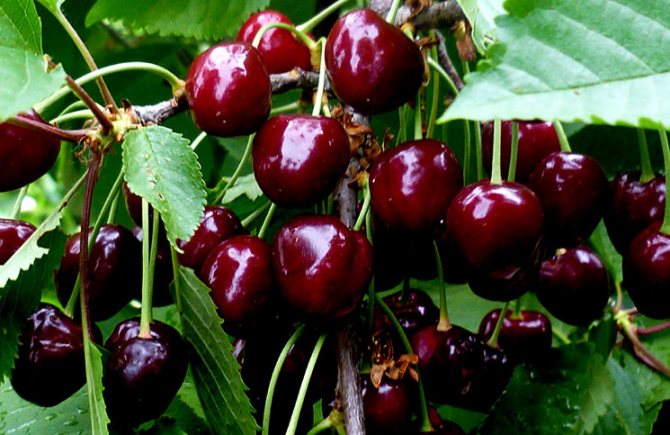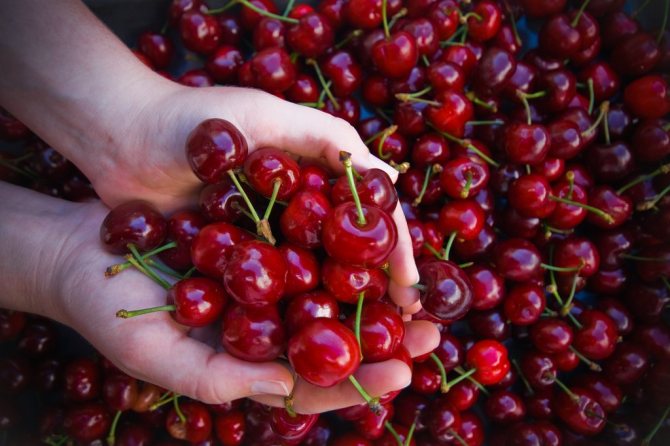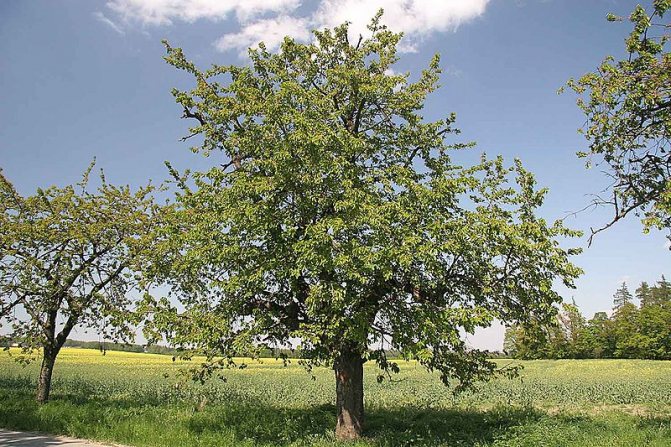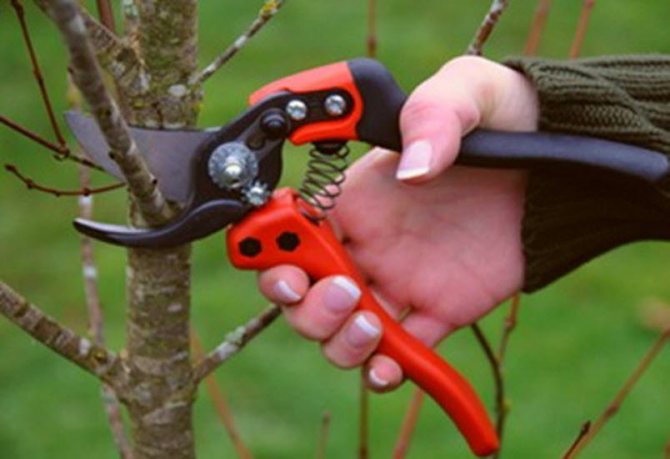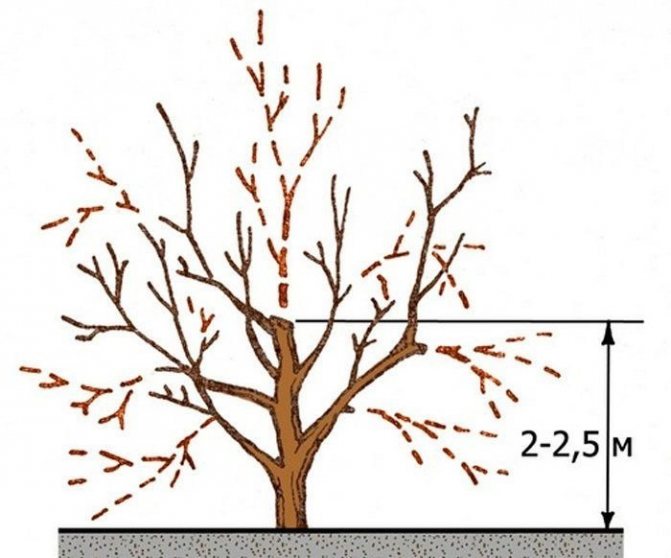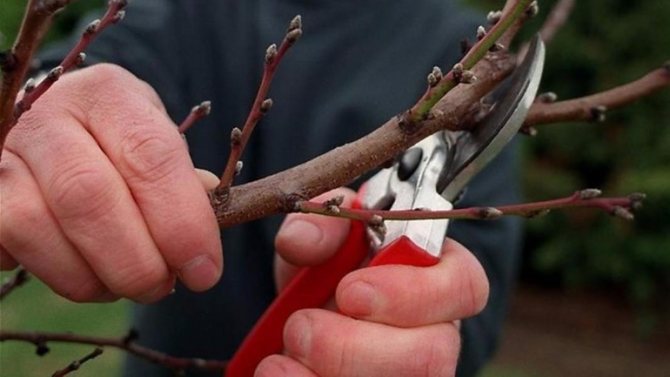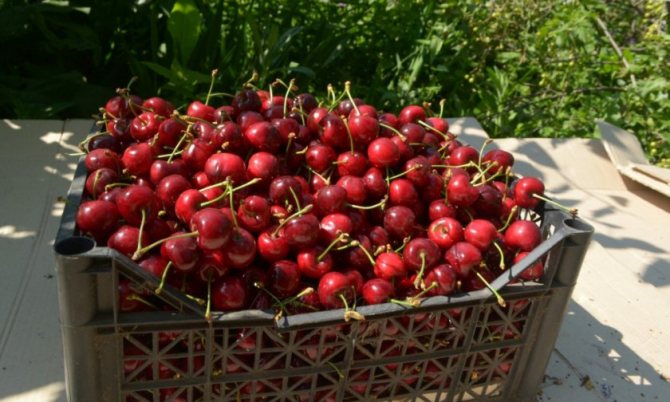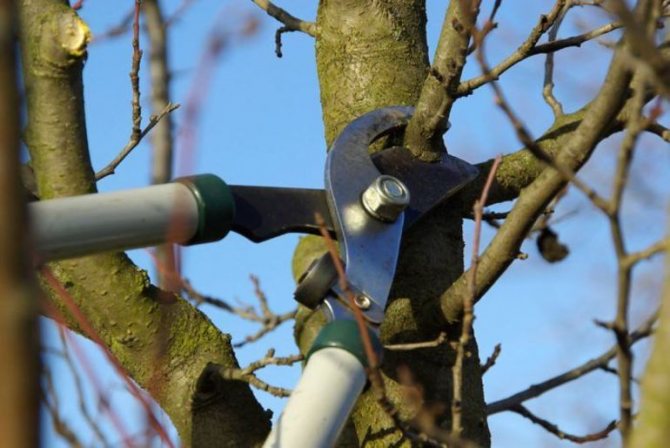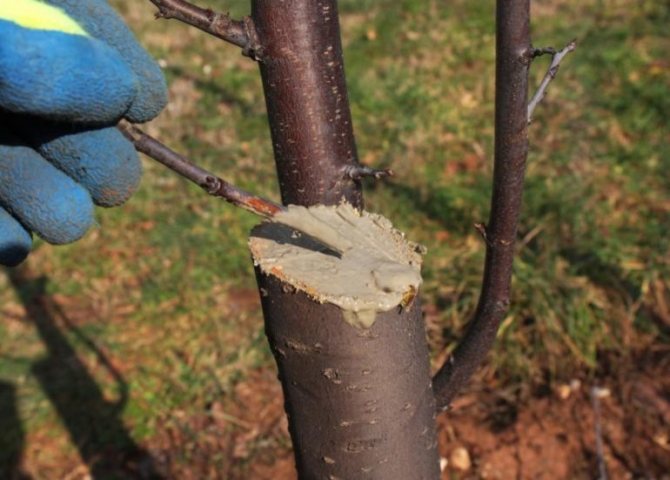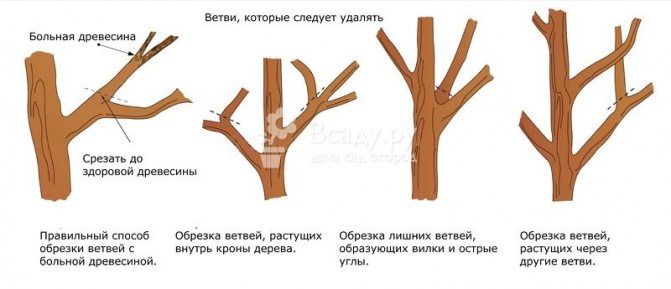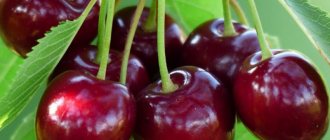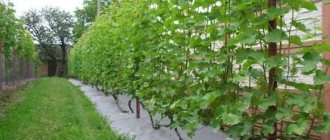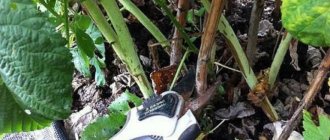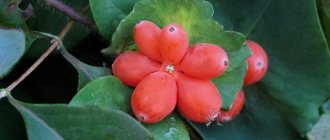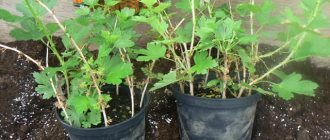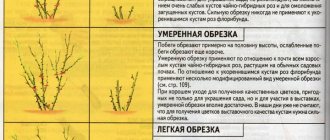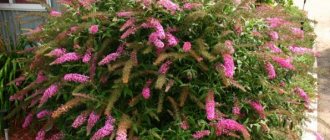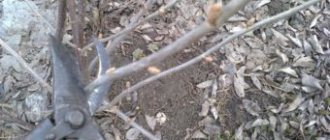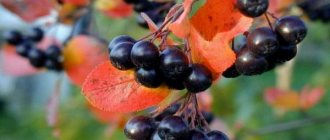
Cherries are much sweeter than cherries, so the popularity of this culture is understandable. When growing cherries in the Moscow region, it is important to take into account that non-zoned varieties are characterized by reduced cold and drought resistance, therefore it is best to choose breeds bred specifically for your region. And of course, when caring for cherries, pruning of trees should be carried out in accordance with all the rules.
Sweet cherry is a relative of cherry. Its botanical name is Cerasus avium, which means "bird cherry". The culture ripens earlier than all stone fruits and is a dessert food.
Cherry contains a lot of potassium, due to which it has a diuretic effect, contains provitamin A, vitamins A, group B, niacin. Its fruits contain a lot of copper, manganese, zinc, cobalt, as well as calcium and iron. The pulp of the berries contains few organic acids, so it can be recommended for people suffering from peptic ulcer disease. The greatest preference should be given to dark red varieties, since they have more anthocyanins, which help to strengthen blood vessels and lower blood pressure.
Sweet cherry has a mild laxative effect, quenches thirst, relieves coughing attacks, is useful for urolithiasis, rheumatism, gout, anemia, and salt metabolism disorders. For peptic ulcer disease, a coating agent made of cherry gum is very effective. A decoction of the stalk of sweet cherry treats diseases of the joints.
Sweet cherry is also called "female berry". It contains substances similar in structure to female sex hormones, which have a tonic and stimulating effect on the human body.
In this article, you will learn about the features of agricultural technology and how to properly prune cherries in the garden.
The choice of planting material
It is worth purchasing cherry seedlings only in specialized nurseries. A tall tree with a large number of shoots will not be the best option - during digging for sale, its powerful root system is damaged and the survival rate of such plants is much lower than annual seedlings.
Each selected plant must have a visible grafting site. Outwardly, it looks like a slight bend in the trunk at a distance of 5-20 cm from the root collar. If the trunk of the seedling is straight, this indicates that it is most likely a seedling, and the quality of the future harvest is unlikely to correspond to the declared variety.
An annual cherry tree should have 2-4 branched shoots no more than 20 cm long. The optimum height of the seedling is about 1.5 m.The root lobe should be well developed, and their length should not exceed 25 cm.
Unbranched seedlings are also considered suitable if the thickness of their trunk is more than 2 cm.When buying such a tree, after planting it is crowned - the crown is cut off above the bud at a height of 18-20 cm.
The roots of the seedling should be moist at the time of purchase. On the root system and aboveground parts of healthy plants, there are no outgrowths and damage. Inelastic bark, cracking at the slightest bend, indicates that the plant has been overdried. There should be no open leaves on the seedling.
Pruning for beginners
In the conditions of home gardening, the following types of pruning of cherry trees are used:
- Carrying out formative pruning is aimed at creating the most durable and powerful skeleton and involves the formation, taking into account the location of the crown tiers. A correctly performed procedure has a positive effect on yield and helps to increase the plant's resistance to infectious lesions.
- Performing anti-aging pruning is very important for old or unproductive fruit trees. The procedure is carried out after harvest, in the early autumn period.
- Sanitary measures are aimed at reducing the risk of damage to fruit plantings by diseases or pests, therefore, they involve the removal and subsequent destruction of all branches affected by pathogenic microflora.
Summer pruning of cherries at the fruiting stage is of particular importance. During this period, it is imperative to remove all broken off branches in a timely manner.
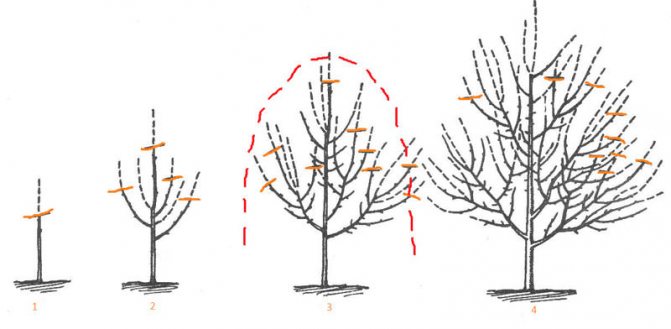

A classic option for forming a cherry tree for novice gardeners is to create a sparse-tiered crown. It is best if, as a result of this formation, eight branches of the main skeleton remain per plant, which are arranged in three tiers. The recommendations for pruning are as follows:
- on the territory of the southern regions, the height of the trunk should be about 0.6 m, and when grown in the northern regions - 0.4 m;
- all sections should be treated with oil paint, garden varnish or special protective mastics;
- pruning of two-year-old seedlings is carried out in the spring;
- branches of the first tier are cut to a length of 0.5 m, and the main shoot is also shortened;
- in the third year, the work consists in identifying one branch of the first tier with the weakest growth and truncating the remaining branches to the length of this branch, and also the formation of skeletal branches of the second order on the second tier is carried out;
- the formation of the main trunk assumes the presence of five buds on the plant, from which branching of the third order is formed;
- in the fourth year, the branches of the main skeleton should be removed and the most developed shoots should be shortened.
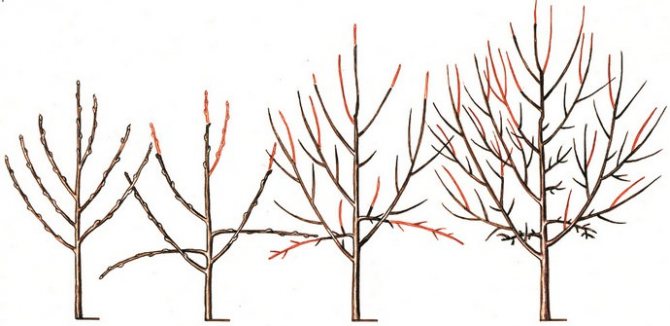

It should be remembered that any shoots that grow inside the crown or intersect with each other must be removed without fail.
The best varieties for the Moscow region
Sweet cherry, unlike other fruit and berry crops, is more capricious in terms of wintering, therefore, for growing in the Moscow region, it is better to purchase the most frost-resistant varieties. The most attractive variety for this region is the Iput cherry. In addition to resistance to low temperatures, there are such advantages as early ripening of fruits, resistance to fungal diseases, as well as a good yield - about 30 kg with an average weight of 1 berry in 9-10 g.
For gardeners who have a small plot of land at their disposal, such a factor as the compactness of the crown and the small height of the tree will be important. In this case, the best purchase would be the Ovstuzhenka cherry. Its fruits are slightly smaller than those of the previous variety, but more stable and transportable. Ostuzhenka also winters well in the Moscow region and rarely suffers from various kinds of diseases.
Fatezh is considered the most productive cherry variety; under favorable conditions, up to 50 kg of yellowish-red sweet fruits with an average weight of one berry in 4 g can be harvested from one tree.
How to plant
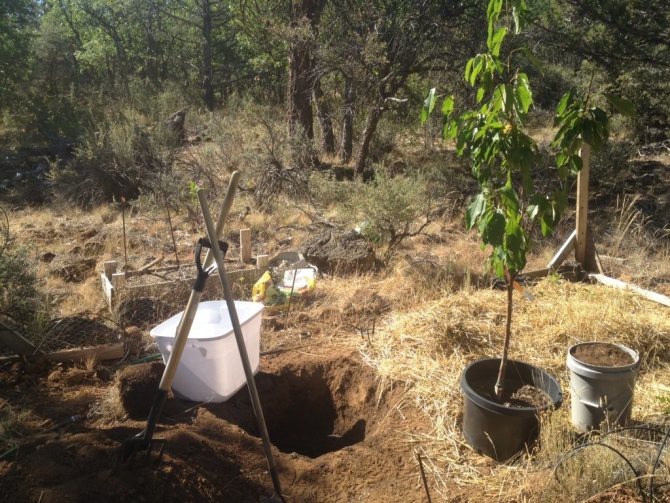

The culture can be planted on the site, both in autumn and spring. Before winter, it is customary to do this in warm regions - 2-4 weeks before the freezing of the earth. Where a cold climate prevails, as in the middle lane and in the Moscow region, it would be more correct to plant cherries in the spring, before the buds swell.
Saplings need warmth and sun, so they need to be planted on the southern, southeastern or southwestern side of the site. It is also necessary to protect the tree from cold winds.Ideally, the site needs loamy or sandy loam, and the groundwater should go deep, because the taproots of a sweet cherry can deepen up to 2 m and begin to rot when there is an excess of moisture.
Interesting!
Most of the cherry varieties are partially self-pollinated and self-fertile. For the plant to bear fruit well, the ovary must be pollinated with the pollen of the "pollinator relative." For a minimum yield loss, it is desirable to have several trees on the site, even if they are self-fertile.
Soil preparation
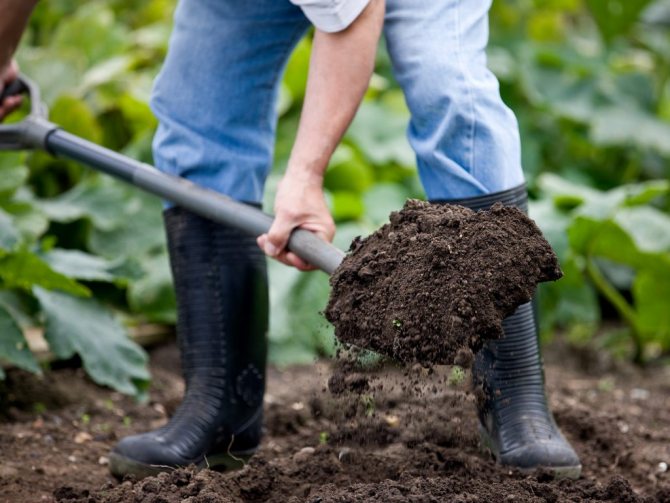

If planting is planned in the fall, then work on the preparation of the site should begin in advance. 1.5-3 weeks before the day of planting, you need to dig up the soil and apply fertilizers:
- superphosphate - 0.18 kg per m2;
- compost - 10 kg per m2;
- potash fertilizers - 0.1 kg per m2.
You can add only a special complex intended for cherries and cherries, in the recommended dosage. If the soil is highly acidic, you will need to add slaked lime. But this must be done 7-10 days before the application of other fertilizers, otherwise they form insoluble complexes and will not bring any benefit.
Table: Recommended dosage of lime for different types of soil
| Reaction of the medium (pH) | Clay, loamy, kg / m2 | Sandy, sandy loam, kg / m2 |
| ≤ 4 | From 0.5 | 0,3-0,4 |
| 4,1-4,5 | 0,4 — 0,5 | 0,25-0,3 |
| 4,6- 5,0 | 0,3 — 0,4 | 0,2-0,4 |
| 5,1-5,5 | 0,25 — 0,3 | Do not apply |
| 5,5-6,0 | Do not apply | Do not apply |
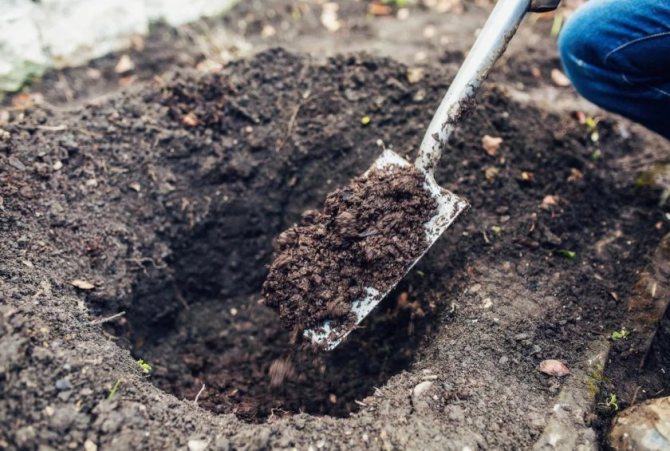

The seedling pit is prepared 2 weeks before planting: the diameter is at least 1 meter, and the depth should reach 60-80 cm.When removing the soil, a stake is driven into the center of the niche, rising half a meter above the level of the site, and the upper fertile layer is folded separately from the lower and mixed with compost and fertilizers:
- superphosphate - 0.2 kg;
- wood ash - 0.5 kg;
- potassium sulfide - 0.06 kg.
This mixture is placed in a pit, forming a tight mound around the peg. An infertile soil layer is poured on top, the site is watered and left for 2 weeks to sink the earth.
Sapling selection
Better to take one- or two-year copies. The foliage on the branches must be removed to prevent moisture loss. When choosing a young plant, you must very carefully examine the trunk: by its appearance, you can determine the quality of the sweet cherry:
- Vaccination trace - varietal (early fruiting, tasty berries).
- An abundance of branches - it will not be difficult to form the crown correctly.
- The only powerful conductor - a mature tree will not break with a good harvest.
The root system must be developed, healthy and not dry. During transportation to the site, it will need to be wrapped with a damp cloth and a layer of polyethylene.
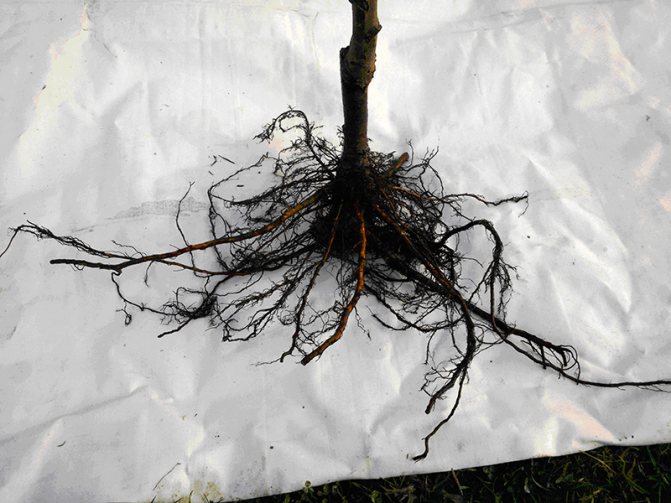

Interesting!
Immediately before planting, cut off any untrustworthy shoots and place the root system in water for 2-10 hours, depending on the degree of dryness.
Table: The best varieties of cherries for the Moscow region
| Variety | The beginning of fruiting, the age of the tree in years | Ripening terms | Berry weight, g | Productivity from one tree, kg | Needs cross-pollination |
| Large-fruited | 4 | Second half of June | 10,5 — 18 | 44-55 | + |
| Franz Joseph | 5-6 | End of June | 5-8 | 35-40 | + |
| Valery Chkalov | 5-6 | May | 6-9 | Up to 60 | + |
| Lena | 4 | July | 6-8 | 20-25 | + |
| Michurinka | 5-6 | July | 6-7 | 30 | + |
| Veda | 4-5 | July | 5-6 | Up to 65 | + |
| Raditsa | 4-5 | Mid june | 4,5-6 | 35-55 | + |
| Iput | 4-5 | End of June | 5-9 | 20-25 | + |
| Rechitsa | 5 | Second half of July | 5-6 | 30 | + |
| Bryansk pink | 5 | July August | 4-5 | 20-30 | + |
| Ovstuzhenka | 4-5 | June | 4-6 | 16-30 | + |
| Odrinka | 5 | July | 5,5-7,5 | 82 | + |
| Narodnaya Syubarova | 4 | June | 6 | 18-30 | — |
| Chermashnaya | 4-5 | June | 4,5 | 12-30 | + |
| Teremoshka | 4-5 | July | 5-6,5 | 15-30 | + |
| Leningrad black | 3 | Second half of July | 3,5 | 30-40 | + |
| Backyard yellow | 6 | June | 5,5 | 50 | + |
| Tyutchevka | 5 | July August | 5,3 | Up to 80 | + |
| Red hill | 4 | June | 4-6 | 45 | + |
| Jealous | 5 | End of June | 5-8 | 14-30 | + |
| Gift to Stepanov | 4 | July | 4 | Up to 60 | + |


For varieties suitable for cultivation in the Moscow region, frost resistance and good resistance to diseases are characteristic (except for cherries of the Valery Chkalov variety, it is susceptible to gray rot and coccomycosis). Red varieties are well stored and suitable for transportation, yellow cherries have a more delicate skin - they cannot be transported, but gardeners' reviews of such a berry are very good.
Disembarkation
You can plant cherries in open ground in the fall before the arrival of stable frosts. It is necessary to ensure that the root collar of the plant, after sprinkling with earth, remains above the surface by at least 5 cm. The roots are carefully straightened, placing them on a lump of fertile soil, and the hole is filled with an infertile layer. Then they pour a bucket of water so that the soil subsides. The earth around the trunk is compacted and a groove is made 30 cm from it, into which another bucket of water is poured. After subsidence of the soil, you will need to add earth. Placing several cherry seedlings, it is necessary to leave at least 4 m between them. This is due to the growth of the root system and tree crowns.
In the spring, after the snow cover has melted and the soil dries up, nitrogen and mineral additives are introduced into the pit prepared in the fall. Plants can be planted in 7-10 days. After planting, cover the soil around the trunk with mulch.
Landing
Cherry seedlings can be planted in a permanent place both in spring and in autumn.
If planting is planned in the spring, then it is better to prepare the soil in advance. For this, the soil is well dug up and fertilizers are applied along the way. Manure, compost or any complex mineral fertilizer are used as top dressing. If the soil in the selected area has high acidity, it is lime.
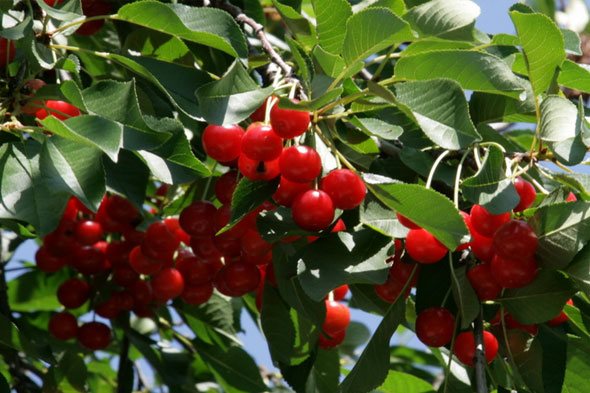

The planting site should be well lit, protected from strong winds, and should not be shaded by other trees or buildings.
It is important to remember that only a small number of cherry varieties are self-pollinated, therefore young trees are planted in groups, but so that the distance between them is at least 7 m.
For planting cherries, they dig a hole 60x80 cm and drive a stake into it, to which the tree will be tied in the future. Then the pit is 1/3 filled with a mixture of humus, turf and superphosphate, forming a neat mound. A seedling is placed on this hill, the roots are leveled and covered with half of the earth. Then the root system is abundantly moistened and completely covered. It is not worth deepening the root collar, the earth around the trunk is crushed and mulched with peat or humus.
The autumn planting of cherries in the middle lane hardens the plant and makes it more resistant to the whims of nature in the future. However, it must be remembered that this method significantly reduces the survival rate of seedlings. It is best to carry out this procedure no later than the second half of September.
A pit for planting cherries is prepared in advance, its dimensions should be approximately 60x60 cm. A mixture of humus and potassium sulfate is added to the pit, and then a stake is inserted to fix the trunk of the sweet cherry. The rhizome is carefully straightened and placed in a hole, and then sprinkled with earth and tamped a little. The trunk circle is abundantly moistened, the tree trunk is firmly tied to a peg. For better survival, it is recommended to cover cherries from severe frosts and cold winds by wrapping the trunk with thick paper or geotextile.
Rules for caring for a tree after pruning operations
Cherry reacts painlessly to pruning if it is done on time and correctly. But any wounds should be covered with garden varnish, and it is advisable to wipe them with a 5% solution of copper sulfate or 3% Bordeaux liquid before this procedure. Cut branches are burned as quickly as possible: they may contain foci of diseases and pest eggs.
There are no special measures for caring for trees after the usual pruning, but if a fair amount of wood had to be removed, the cherries should be well watered and fed: in the spring with an emphasis on nitrogen, in the fall - on phosphorus and potassium. In relatively cold regions, trees that are heavily cut in autumn must be insulated: the trunk circle is mulched and the trunks and bases of skeletal branches are tied with burlap.
Agrotechnical cultivation
Sweet cherries are very demanding for watering.Drought can lead to the death of a young plant, and excessive soil moisture will prevent oxygen from reaching the roots, the berries on the flooded plant will begin to crack. The optimal irrigation regime is 1 time in 2 weeks, however, if the summer is hot and dry, watering is increased up to 1 time in 7-10 days.
Fertilize seedlings 2 times per season. The first complex feeding is carried out at the very beginning of May, the second - in September. Superphosphate is suitable for autumn feeding - it increases the winter hardiness of plants.
In order for the sweet cherry to develop correctly and bear fruit abundantly, it needs to form a crown. To do this, trees are regularly pruned according to the following pattern:
- 1 year of cultivation. Leave a trunk with a length of 70-90 cm.
- 2 years of cultivation. Leave 4-6 powerful skeletal branches of the lower tier with a length of no more than 50 cm.It is important to remove all branches that have grown at a height below 65 cm.
- 3 years of cultivation and subsequent. All semi-skeletal branches leading to the inside of the crown are removed, as well as all dried and damaged branches, the remaining branches are shortened by half.
What branches to cut and prune from sweet cherries in spring
Now we will consider which branches are subject to complete removal, and which ones only need to be pruned.
ATTENTION! Be sure to read the material to the end and only after that start pruning your cherries.
In order not to harm the plant instead of benefit, it is required to strictly follow the rules for pruning.
- First of all, you need to delete all diseased branches... Moreover, they need to be postponed separately, and then destroyed, burned.
Important! BOlives need to be pruned to healthy wood.
In this case, it is advisable to do this
"On the ring",
method
"For translation".
- All are also subject to deletion. broken and broken branches, which, most likely, are also affected by some kind of disease.
- Get rid of everyone crooked branches (growing through other branches or crossing, "rubbing against each other") and from branches growing inside the crownthat shade good branches.
By the way! Such branches can be removed completely (by cutting "into a ring"), or it can be translated "to fruiting" by cutting "to the bud", while it must look outward (if you do the opposite, the operation will be meaningless).
- Absolutely unnecessary branches growing at a very sharp angle (ie, their angle of departure is less than 40-45 degrees) and forming the so-called "forks". They are also cut out.
Due to the load of fruits, such a branch can simply crack and a severe wound is formed.
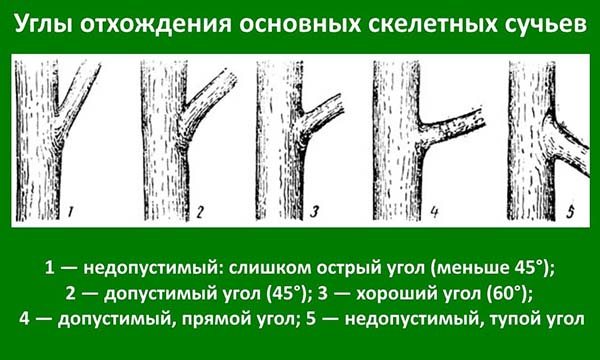

- As you understood from the picture above, in addition, you need cut off all branches growing down (at an obtuse angle).
- Are subject to removal all tops (vertical shoots on skeletal branches, they are also called "wen"), as well as root suckers.
Diseases and pests
Despite the resistance of most varieties of sweet cherries to fungal diseases, they occupy a leading position in the list of possible problems that may appear when growing this crop.
Clasterosporium disease can be recognized by black spots on the leaves of the plant. In the future, the foliage of the infected cherry tree falls off, and the fruits dry out.
No less dangerous are cocomycosis and gray rot. They are caused by rainy, cold weather. Both diseases develop rapidly, and soon affect the entire tree. The leaves dry out and crumble, the yield of such plants decreases, the fruits rot.
As a prophylaxis for these and other diseases, immediately after flowering, the tree must be sprayed with a copper-containing preparation. In case of infection, the affected parts of the trees are removed and burned.
The most dangerous pests are:
- black cherry aphid,
- cherry fly,
- leaf roll,
- cherry pipe-runner.
They feed on plant sap, taking away their vitality and significantly reducing yields.As a fight against parasites, it is better to use insecticides such as Aktara, Karbofos, etc. In some cases, folk remedies can also help. For example, an aqueous solution of tobacco dust with the addition of a small amount of liquid soap.
Useful Tips
Cherry pruning must be done correctly, otherwise you can forget about a good harvest. To form the crown, use only a sterile, sharp instrument: a lopper, a pruner. With the help of a hacksaw, inconveniently located branches are cut, a pruner will help remove young shoots, clean up wounded surfaces. If there are several cherries in the area that require pruning, after processing each tree, wipe the tool with alcohol.
Young shoots are easily removed; powerful branches are difficult. At their base there is an influx along which the cut should pass. It needs to be done perpendicularly. Horizontal / vertical slices take a long time to heal.
In summer and spring, pruning should be done on warm, sunny days with average temperatures. In the fall, schedule the time so that after pruning, the plant has time to regain strength before the first frost.
Having decided to form a crown, you need to take care of the treatment of wounded surfaces, otherwise there is a great risk of infection. Garden varnish and vegetable-based oil paints are used as disinfectants and healing agents.
Harvesting and storage
They begin to harvest cherries when the berries acquire a color characteristic of their variety. It is not worth picking unripe fruits, their taste is reduced, and they will not be able to acquire the necessary sweetness at home. Overripe berries crumble and attract a large number of birds and pests to the site.
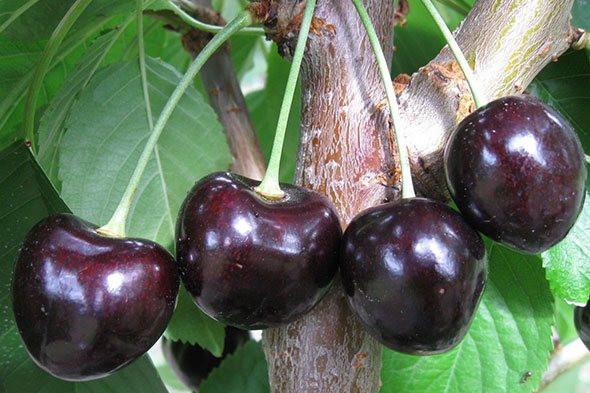

Harvested in the morning after dew falls. If it rains, it is better to postpone this event to the next day to extend the storage period of the crop.
Ripe cherries are not characterized by increased keeping quality. At room temperature, it retains its freshness for no more than 5-7 days, in the refrigerator - up to 3 weeks, but for this the berries must be absolutely dry.
The best winter storage method is to freeze the fruit. Thoroughly washed and dried berries are placed in sealed containers and put into the freezer. After defrosting, the cherries must be eaten fresh immediately or made into a compote or pie filling. Repeated freezing of sweet cherry berries is unacceptable.
Tags: edible berries
Possible problems
There are certain difficulties associated with sweet cherry, its planting and leaving in the suburbs. Inexperienced summer residents ignore such a problem as the flow of gum. The release of a viscous sticky substance from cracks is alarming. Spores of a pathogenic fungus can accumulate in the gum. So that the cherry does not hurt, timely removal of gum outgrowths is necessary.
If you see that the leaves on the tree have turned yellow for no apparent reason, and the garden culture dries up, take a closer look at the near-stem zone. A common problem is the beetle larvae that settle in the roots of stone fruit trees. You can scare off pests by planting several lupine bushes in the near-stem circle.
Sometimes ants settle under the roots of cherry trees. To remove insects, summer residents pour boiling water into their holes. A good ant repellent is an infusion of wormwood.
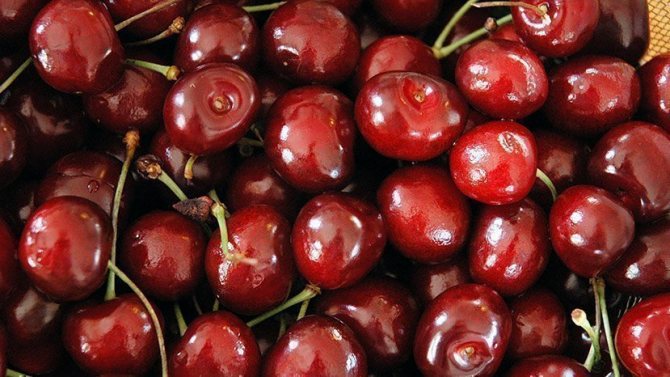

Sweet cherry: the main diseases of culture
Cherry has fewer diseases than other stone fruits, but the main diseases of the culture are coccomycosis and cherry moniliosis.
Moniliosis occurs when plants are infected with the pathogenic fungi Monilla cinerea. With the spread of the disease on a cherry tree, branches and leaves dry out, as well as rotting of fruits. The infection spreads quickly along the crown of the tree, especially in thickened plantings in low and humid places.Cool weather and frequent rainfall contribute to the disease.
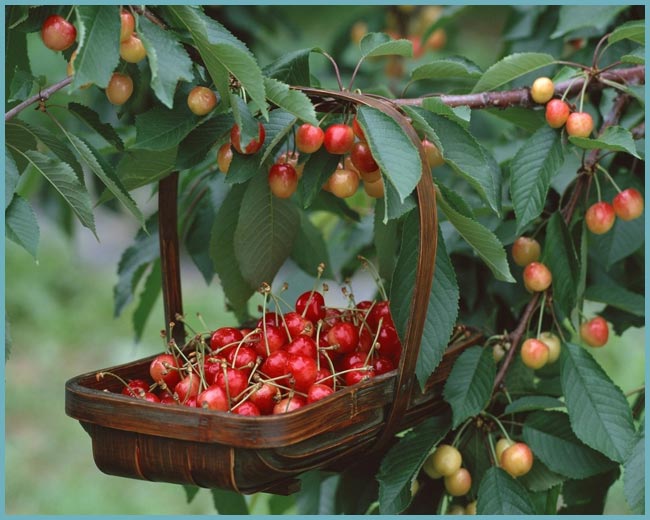

Treat the garden from pests
Coccomycosis - infection with the fungus Coccomyces hiemalis manifests itself on the leaf blades in the form of merging spots of small red dots. The infection infects plants in inclement weather. The leaves are affected by infections, gradually turn brown and fall off.
To fight infections, plants are treated with Horus at the rate of 30 g per bucket of water.
Advice! Soap should be added to the drug solution to form a thick foam. Spraying begins on the inside of the leaves.
Affected parts of diseased plants should be burned to prevent the spread of infections.
Of all the pests, aphids are the most malicious for cherries - pest control is carried out using special preparations.
Cow heart
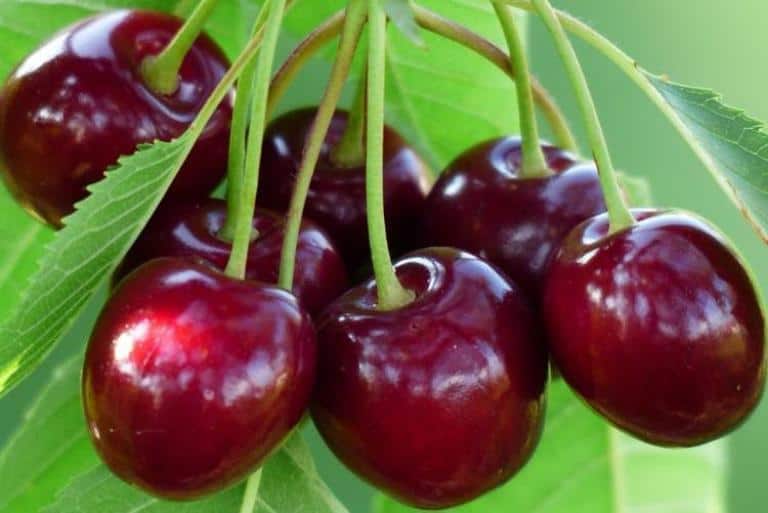

Frost-resistant variety, begins to produce the first berries in the fifth or sixth year after planting the seedling. It blooms profusely at the end of spring. And in the middle of summer, you can collect sweet fruits of a beautiful burgundy color and large size from it. Differs in unprecedented productivity - one tree can easily produce about a hundred kilograms of berries. It practically does not get sick, harmful insects bypass it. But when planting, it is imperative to take into account the composition of the soil, since if the roots begin to rest on solid ground, then the tree may soon die. He needs deep soil and fertile soil.
Ovstuzhenka
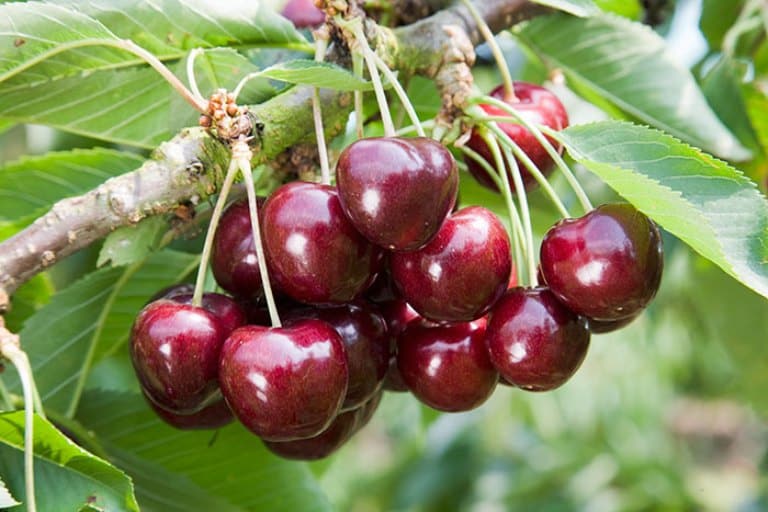

This variety is perfect not only for the Moscow region, but also for cold Siberia, as it is the most frost-resistant, withstanding frosts down to -45 degrees. Although it is self-fertile, a pollinator variety will not interfere with the neighborhood, which will help increase the amount of the crop. From the age of five, the tree begins to bear its first fruits, usually in late July or early August. The berries are large, sweet, burgundy, do not crack at all and tolerate transportation perfectly. If pollinating insects have not visited this tree, then it will be possible to collect no more than 15 kg from it. In the best case, you can collect up to 30 kg. Practically does not get sick and is not affected by pests.
Valery Chkalov
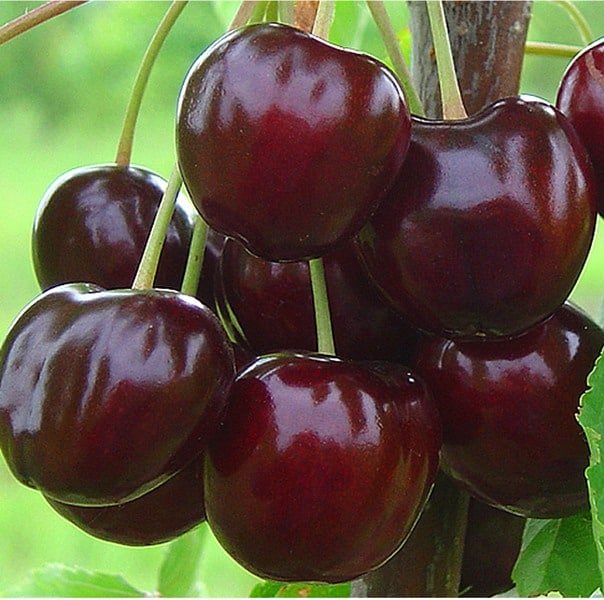

This variety was named in honor of the notorious pilot because of the growth of the tree itself, which grows up to six meters in height, as if striving towards the sky. Easily tolerates winter colds up to -30 degrees, but can get sick with gray rot and coccomycosis. It brings the first berries in the sixth year of its own life. The fruits are harvested at the end of June. If a tree grows in a cold climate, then more than 50 kg cannot be collected from it, and if in a warm and sunny climate, then you can easily gain about 80 kg. Fruits are larger than average in size and have a beautiful heart-shaped shape. The peel and flesh are dark red or burgundy, and the taste is very sweet. Great for making stewed fruit. Of course, they are much tastier to eat freshly picked.
Climatic conditions of the area
The peculiarities of the climate of the Moscow region do not provide for the cultivation of fruit trees. But thanks to the work of breeders, there are species acclimatized for the area.
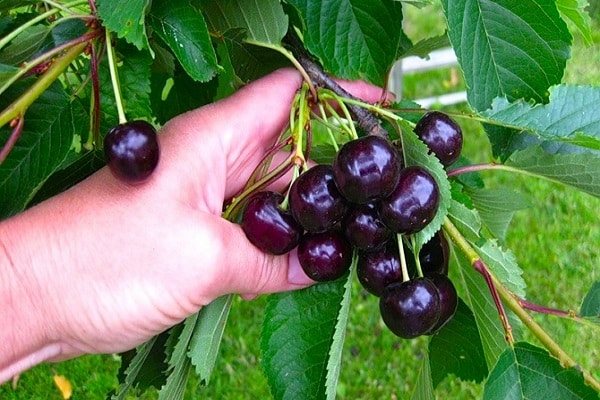

Climatic features of the region:
- There is a big difference between the temperature in winter and summer.
- Decrease in temperature in winter, reaching -35 ⁰С.
- Winter with little snow.
- The contrast of the weather, a sharp change from heat to cool.
Currently, there are many varieties that are adapted to such conditions. Trees are able to withstand even the harshest weather.
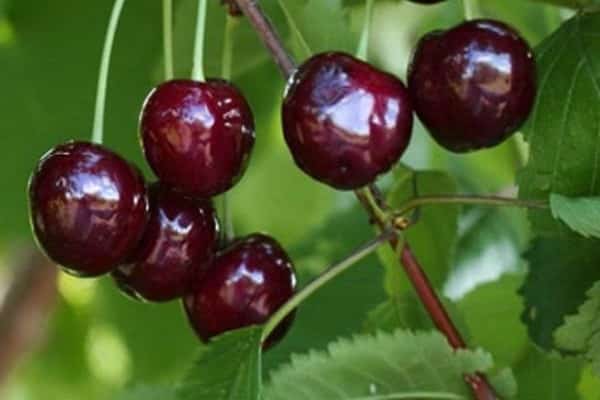

Tyutchevka
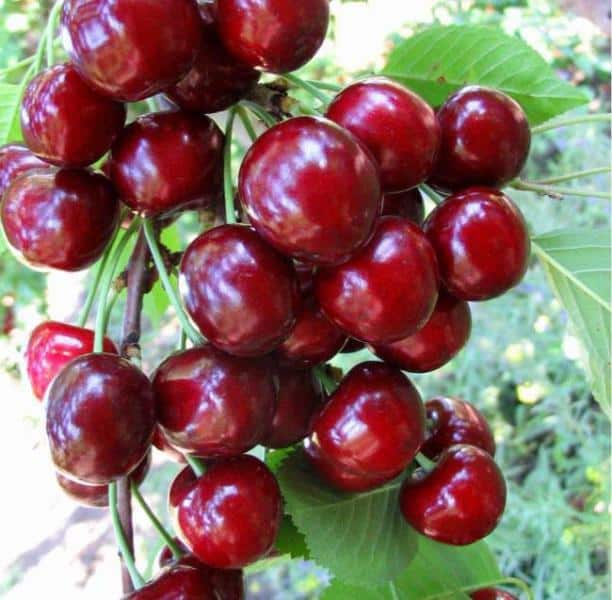

This variety is very popular not only because of its excellent frost resistance, but also because of its high yield. This cherry variety has an average height and a very attractive round crown, but it is appreciated by gardeners not for these qualities, but for the incredibly juicy and tasty dark red fruits of large size, which are also convenient to collect, since they are easily detached from the stalk.But they do not spontaneously fall off even from a strong wind. Do not be intimidated by the small number of leaves on the tree, as this is a feature of the variety. Equally well tolerates both cold winters and hot summers, easily repels numerous diseases. It should be noted that a rainy summer reduces the percentage of sweetness in the fruit, making its pulp more watery. But from the warm and sunny summer, the berries are sweet. After the first five years, the tree begins to bear fruit in July of each year. You can easily collect up to 40 kg of fragrant cherries over the summer.
Testimonials
- “I received cherries as a birthday present. I doubted for a long time that the seedling would be able to take root well and give a crop. However, the very next year I saw flowers on the tree, which surprised the whole family. In mid-June, we tasted the first berries. My cherries hibernated without shelter, I did not expect such a surprise. Now the tree is already quite large and I am trying to give it due attention. In our Yaroslavl side, such a phenomenon is a rather rare case. "
- “I grow several cherries and am very pleased with the result. I bought columnar varieties, since the garden is small and there is not much space. Every year, these wonders delight us with bright red berries, which are strewn with the trunk and branches. Buy only columnar cherries - this is a real miracle of selection. To be sure, I cover the trunks with non-woven material for the winter period, and put a layer of peat and humus under the trees, since winters are often snowy. "

